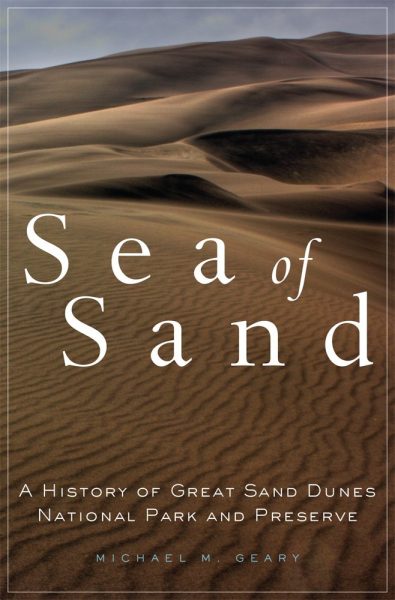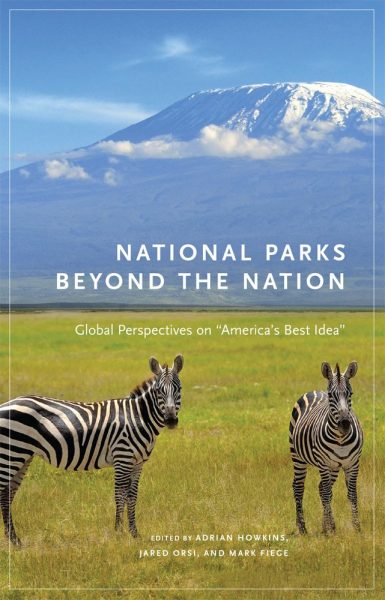Public Lands Book Series
In the fall of 2014, the Public Lands History Center began working with the University of Oklahoma Press to create a new Public Lands History book series with the PLHC imprint. The final agreement for the series was signed in July 2015. The series includes monographs published by PLHC faculty and affiliates on public lands topics, including those developed out of projects undertaken by the PLHC. Additionally, monographs on relevant topics from other scholars will be accepted into the series. The Faculty Council of the PLHC review all proposals and manuscripts and offer comments to the University of Oklahoma Press on their inclusion in the series.
The Public Lands History book series seeks to publish books that deal broadly and expansively with the history of public lands in the United States and elsewhere. The series seeks manuscripts about the diverse array of public lands that illuminate the history of the relationship between humans, their cultures and economies, and non-human nature. The series is historical but also interdisciplinary. We seek to invite submissions from historians and from authors whose work, while attentive to history, foregrounds questions and issues related to the natural and environmental sciences, anthropology and archaeology, literary studies, visual representation, and other fields.
To learn more about the series or to submit a proposal for inclusion, review the instructions on the University of Oklahoma Press website, and direct your inquiries/proposals to Charles E. Rankin, Editor-in-Chief.

Crossroads of Change, The People and the Land of Pecos
by Cori Knudten, Maren Bzdek
Illustrated, 224 pages, paperback, ISBN 9780806166247
University of Oklahoma Press book page
Spanning the period from 1540, when Spaniards first arrived, into the twenty-first century, Crossroads of Change focuses on the history of the natural and historic resources Pecos National Historical Park now protects and interprets: the ruins of Pecos Pueblo and a Spanish mission church, a stage stop along the Santa Fe Trail, the Civil War battlefield of Glorieta Pass, a twentieth-century cattle ranch, and the national park itself. In an engaging style, authors Cori Knudten and Maren Bzdek detail the transformations of Pecos over time, often driven by the collision of different cultures, such as that between the Franciscan friars and Pecos Indians in the seventeenth century, and by the introduction of new animals, crops, and agricultural practices—but also by the natural forces of fire, drought, and erosion.
Located on a natural trade route, Pecos has long served as a portal between different cultures and environments. Documenting this transformation over the ages, Crossroads of Change also, perhaps, shows us Pecos National Historical Park as a portal to the future.

The Chisholm Trail: Joseph McCoy's Great Gamble
by James E. Sherow, Foreword by James P. Ronda
Illustrated, 360 pages, hardcover, ISBN 9780806160535
University of Oklahoma Press book page
The Chisholm Trail follows McCoy’s vision and the effects of the Chisholm Trail from post–Civil War Texas and Kansas to the multimillion-dollar beef industry that remade the Great Plains, the American diet, and the national and international beef trade. At every step, both nature and humanity put roadblocks in McCoy’s way. Texas cattle fever had dampened the appetite for longhorns, while prairie fires, thunderstorms, blizzards, droughts, and floods roiled the land. Unscrupulous railroad managers, stiff competition from other brokers, Indians who resented the usurping of their grasslands, and farmers who preferred growing wheat to raising cattle all threatened to impede the McCoys’ vision for the trail. As author James E. Sherow shows, by confronting these obstacles, McCoy put his own stamp upon the land, and on eating habits as far away as New York City and London.
Joseph McCoy’s enterprise forged links between cattlemen, entrepreneurs, and restaurateurs; between ecology, disease, and technology; and between local, national, and international markets. Tracing these connections, The Chisholm Trail shows in vivid terms how a gamble made in the face of uncontrollable natural factors indelibly changed the environment, reshaped the Kansas prairie into the nation’s stockyard, and transformed Plains Indian hunting grounds into the hub of a domestic farm culture.

Sea of Sand: A History of Great Sand Dunes National Park and Preserve
by Michael M. Geary
Illustrated, 296 pages, hardcover, ISBN 9780806152103
University of Oklahoma Press book page
Sea Of Sand Official Press Release
This second volume in the series grew out of a PLHC project to write an administrative history of Great Sand Dunes National Park.
Sculpted into graceful contours by countless centuries of wind and water, the Great Sand Dunes sprawl along the eastern fringes of the vast San Luis Valley of south-central Colorado. Covering an area of nearly thirty square miles, they are the tallest aeolian, or wind-produced, dunes in North America, towering 750 feet above the valley floor. With the addition of the enormous Baca Ranch and other adjacent lands, the dunes—originally designated as a National Monument in 1932—attained official National Park status in 2004. In Sea of Sand, Michael M. Geary guides readers on a historical journey through this unique ecosystem, which includes an array of natural and cultural wonders, from the main dunefield and verdant wetlands to the summits of the Sangre de Cristo Mountains.
Described by explorer Zebulon Pike as “a sea in a storm” and by frontier photographer William Henry Jackson as “a curious and very singular phase of nature’s freak,” the Great Sand Dunes are a nexus of more than 10,000 years of human history, from Paleolithic big-game hunters to nomadic Native Americans, from Spanish conquistadores and transcontinental explorers to hard-rock miners and modern-day tourists in motor homes. Like these successive waves of visitors, Sea of Sand follows the water, analyzing its critical role in the settlement and development of the region. Geary also describes the profound impact that waves of human use and settlement have had on the land—which ultimately inspired the early grassroots efforts by San Luis Valley citizens to protect the dunes from further exploitation. He examines as well the more recent legislative effort led by an unprecedented coalition of local, state, and federal agencies and organizations, including The Nature Conservancy and the National Park Service, to secure the Great Sand Dunes’ national park designation.
Amply illustrated, Sea of Sand is the definitive history of the natural, cultural, and political forces that helped shape this incomparable landscape.

National Parks Beyond the Nation: Global Perspectives on "America's Best Idea"
Edited by Adrian Howkins, Jared Orsi, & Mark Fiege
Illustrated, 352 pages, hardcover, ISBN 9780806152257
University of Oklahoma Press book page
This volume, the first in the series, explores the idea of national parks in an international context, with contributions from scholars and park managers across the world. It builds upon the papers and presentations at the Public Lands History Center's 2011 National Parks Beyond the Nation colloquium. More information about the colloquium can be found here.
"The idea of a national park was an American invention of historic consequences marking the beginning of a worldwide movement," the U.S. National Park Service asserts in its 2006 Management Policies. National Parks beyond the Nation brings together the work of fifteen scholars and writers to reveal the tremendous diversity of the global national park experience—an experience sometimes influencing, sometimes influenced by, and sometimes with no reference whatever to the United States.
Writer and historian Wallace Stegner once called national parks "America’s best idea." The contributors to this volume use that exceptionalist claim as a starting point for thinking about an international history of national parks. They explore the historical interactions and influences—intellectual, political, and material—within and between national park systems in Canada, New Zealand, South Africa, Indonesia, Antarctica, Brazil, and other countries. What is the role of science in the history of these preserves? Of politics? What purposes do they serve: Conservation? Education? Reverence toward nature? Tourist pleasure?
People have thought differently about national parks at different times and in different places; and neat physical boundaries have been disrupted by wandering animals, human movements, the spread of disease, and climate change. Viewing parks around the world, at various scales and across national frontiers, these essays offer a panoptic view of the common and contrasting cultural and environmental features of national parks worldwide.
If national parks are, as Stegner said, "absolutely American," they are no less part of the world at large. National Parks beyond the Nation tells us as much about the multifarious and changing ideas of nature and culture as about the framing of those ideas in geographic, temporal, and national terms.